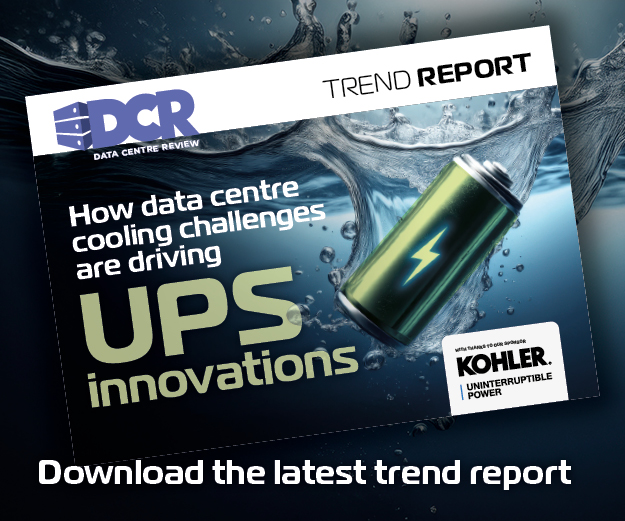Finding the right match can mean a lifetime of happiness together; but not all relationships are between two people. Here, A3 Communications, the data storage industry PR agency, takes a look at those between IT organisations and their data storage. How can end users find the perfect match? When successful relationships are based on long-term commitment, how can IT administrators find the one, rather than end up disappointed after a flash-in the pan?
With the ‘male version’ of Valentine’s Day (if you don’t know what I mean please do have a Google) having just passed us by, and inappropriately clashing with Mothering Sunday, what better time to discuss relationships than now?
When it comes to data storage products, the approach to finding the right match should be similar to that a person would apply to finding a suitable romantic partner: there are qualities an IT solution has to have that are non-negotiable, others less so.
Eric Polet, product marketing manager at Spectra Logic, explains, “There are some traits that your match must absolutely have, such as honesty, kindness, sense of humour, intelligence, etc. These essentials will vary from person to person.”
He compares this human element to the search for a storage solution, “An end user organisation must go through the same initial process: the IT team must determine what it requires for its long-term success and happiness such as business priorities, critical needs, future plans, shared values, preferences and limitations.”
Polet also gives us an example of such match-making when it comes to technology, “Choosing between a private cloud, hybrid cloud, pure cloud, or multi-cloud is a good example of how it is essential to identify your non-negotiable criteria during the selection process.”
Saimon Michelson, field CTO at CTERA, takes a slightly different approach, “A good way to start is to conceptualise the finish.”
He continues, “Decide what you’re trying to get out of the new solution. Are you looking for a more cost-effective means of storing unused data? Are you trying to enhance the productivity of remote workers post-Covid?”
Those deal-breakers Polet mentions are crucial when putting together a plan, be it with a life partner or for a storage solution. Ensuring they are taken care of means that organisations can relax knowing that their must-haves are covered.
Scott Sinclair, principal analyst at ESG Global, tells us what he believes some of these priorities should be, “For data storage, the essentials, such as high availability, performance, cost, and ease of use, are still important, but those are really just the beginning of finding the right solution.”
ESG’s Sinclair also explains how some organisations can underestimate their growth. “Once the essentials are met, prioritise storage solutions that provide the most flexibility to change with the needs of your organisation, and not just in terms of adding capacity or even more performance.”
As Veniamin Simonov, director of product management at NAKIVO explains, success depends on both the storage solution and the organisation involved, “A good understanding from the organisation, explaining its needs, and fairly accurate projection for the next few years are crucial.
“Then it’s a matter of searching for a solution which is not only a good fit at present, but is also likely to be suitable in the coming years. Afterwards, one or more selected products should be evaluated and tested.”
This is useful advice: as many people in the dating game will tell us, sometimes you may think you know what you are looking for in a partner, but it is only when you sit down and write a list of priorities that you form a clear idea of the attributes your match needs to bring to the table.
Another consideration when trying to identify the one, is how much you are willing to invest in the relationship: Spectra Logic’s Polet spells out what should be examined in terms of cost “The initial and ongoing costs, the time requirements, and the flexibility of the solution must all be weighed before choosing ‘the one’.”
Whether the chosen one will be reliable is another factor: lack of reliability can lead to a severe breakdown of trust and reputation, leading to the demise of the relationship and damaging future ones.
In this case that could be an end user discounting a particular technology altogether due to a bad experience.
Doug Williams, northern Europe alliance & channel director at Scality, points this out, “It is vital to find a reliable match that will always show up for you, whether that is your partner or your data storage array; this is a deal breaker.”
He goes on to add “IT organisations should also look for longevity in their chosen solutions to allow for growth and development over the years.”
Any IT administrator wishing to enjoy a fruitful, long-term relationship with its IT environment, also needs to think of anyone else who may be affected by this partnership. If their new match is going to affect other users in their company it is important that their needs are also taken into consideration during the selection stage.
CTERA’s Michelson explains, “It’s also important to engage with business folks to understand their requirements. After collecting/analysing the data and getting business input, it’s time to formulate your functional requirements and start looking for the most appropriate storage solution(s).”
Another essential step when looking to build a long-term relationship, is to look ahead: an IT organisation scouting around for a new match should look beyond the here and now. Just like a person may not tick all the boxes on the first date, upon learning more about them, additional, desirable, highly-compatible aspects may come to light.
The same goes for a data storage product: an IT administrator should not dismiss a solution because it may not tick all the boxes at the start because new, useful features may be on the roadmap.
NAKIVO’s Simonov spells this out, “While, for example, a product may appear to lack a critical feature required in the next two years, there is a chance it may be on the roadmap, or in development.
“Having said that, if one of the end user’s deal breakers is not on the cards for the potential product match in the foreseeable future, they should walk away. In case the organisation needs a deal-breaking feature today, and the vendor does not offer it, it is probably better to go on looking for another supplier.”
The IT admin has a right to expect the product to offer a number of appealing features to the partnership, such as reliability, ease of communications and integration from the product. At this point, with all of that in mind, what would make an IT organisation ‘swipe right?’
Reviews are a great source of first-hand feedback: whilst they are quite hard to come by when it comes to romantic candidates, in the case of IT products they are easier to come by.
These reviews can often help sway an organisation who is toing and froing between two or three different solutions.
NAKIVO’s Simonov mentions the benefits of reviews and customer opinion, “It makes great sense to look for online reviews and case studies, paying specific attention to negative reviews. The goal of such research is making sure the selected vendor is customer-centric and is focused on user satisfaction.”
Total Cost of Ownership (TCO) is another important factor in an IT organisation-data storage solution relationship.
Whilst TCO is something couples may often laugh about as they once again spend money on each other for anniversary gifts and spontaneous presents, it is no laughing matter for vendors, as Simonov summarises, “Organisations with limited budget may prefer to go with a more affordable product, provided that it meets the critical needs.”
Finding the ideal match takes a fair investment of time and effort: however, before starting their searches, organisations need to be very clear with regard to what their needs and constraints are and what they are prepared to compromise on. If the process is given the commitment it warrants, love can be in the data centre air after all!



